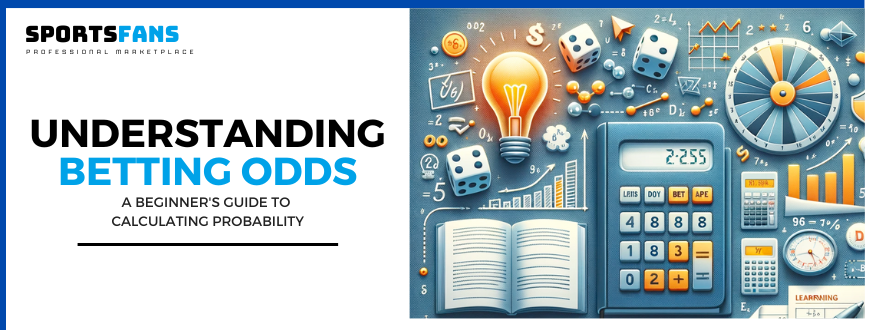
Decoding Betting Odds: How Beginners Can Master Probability Calculation
What is probability? Probability is the likelihood that something happens. Probability is expressed in several ways, including percentages and fractions, but the key thing to note is that the probability of anything happening is always a value between 0 & 1. What about the odds? Odds are related to probability, but they are not the same thing mathematically. In using the popular English figure of speech, when one asks what the odds of something happening are, they simply ask for the probability. However, technically, odds are a ratio between the chances that something will happen and the chances that it will not. The formulae for both probability and odds are simple and are as follows:
- Probability = Occurrence/whole probability space. Since the entire probability space is always 1, then the probability is simply the chance of something happening expressed as a fraction of 1 whole, e.g., 0.3 (decimal probability), 1/3 (fractional), or 30% (percentage).
- Odds = Occurrence/chances of not occurring. For instance, if something has a probability of 1/3, there's a 2/3 chance that it doesn't happen, and the odds are 1/3 over 2/3, which is 1/2 or 0.5.
From a mathematical perspective, that's all there is to know about odds and probabilities. It is in sports betting and gambling in general where these terms take on extra meaning.
What About Probability in Betting?
As we've seen, the probability is the chance of an event occurring. In betting, one can have true probability and implied probability. True probability is the real likelihood of an event occurring. The best way to think about this is to consider the classic coin toss example - however cliche at this point! There are two outcomes from an honest coin toss - heads or tails. The probability of getting either heads or tails is exactly 50% or 0.5. The probability of not getting either is also 50%, or 0.5. This is a perfect example of true probability.
And Odds in Betting?
Implied probability, on the other hand, arises from the betting prices set by bookmakers. Sometime before a match or game starts, the bookie evaluates various events that can occur, doing their best to gauge how likely or unlikely they are. They use intensive statistical analysis, sometimes involving machine learning, artificial intelligence, and other IT technologies. At the end of the day, they come up with betting prices - also known as betting odds - and post them on the betting platforms. These betting prices, attached to each event or betting market, reflect what the bookmaker thinks about each event. They say how likely or unlikely the bookie thinks that event might occur. As such, betting odds or prices are an implied probability - probability from the bookmaker's perspective.
The Ball is in Your Court, Dear Punter…
More importantly, betting odds are a challenge the bookmaker issues to the punter. The challenge says, "That's what I believe about the chances of X occurring. Think I'm wrong? Well, then, prove it!" The betting odds set by the bookie are used to calculate a punter's winnings if they make a successful prediction. If the bookie sets high betting odds, the implication is that they don't really believe in that event happening. If the punter has a different opinion, they should state it. The caveat, however, is that by doing so, the punter has to put their money where their mouth is. Each bet is accompanied by financial consideration in the form of a stake. If the punter gets it right, they get to smile and sing to the bank. Otherwise, sorry, sir, and better luck on your next try.
- Tag
- Correct Score
- Betting Strategy
- Betting Prediction
- Betting Tips
- Bookmakers
- Bookies
- Champions League
- Betting Calculation
- Accumulator Bets
- Football Scandals
- Legal Betting
- Betting USA
- Betting 101
- Football
- Sports Betting
- Betting Systems
- Betting Recommendation
- Online Sports Betting
- Sports Moments
- Sports News
- Betting trends
- Betting Odds
- Professional Betting
- Gambling Career
- Soccer Betting
- Soccer 101
- Tipsters
- Betting Guide
- Sports Betting Strategies
- Betting Market
- Fantasy Sports





